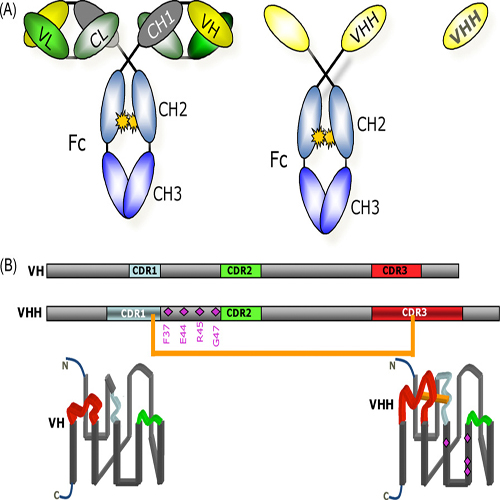Camelid immunoglobulins and nanobody technology
17-Oct-2008
Veterinary Immunology and Immunopathology, 2008, doi:10.1016/j.vetimm.2008.10.299 published on 17.10.2008
Veterinary Immunology and Immunopathology, online article
Veterinary Immunology and Immunopathology, online article
It is well established that all camelids have unique antibodies circulating in their blood. Unlike antibodies fromother species, these special antibodies are devoid of light chains and are composed of a heavy-chainhomodimer. These so-called heavy-chain antibodies (HCAbs) are expressed after a V–D–J rearrangement and require dedicated constant g-genes. An immune response is raised in these so-called heavy-chain antibodies following classical immunization protocols. These HCAbs are easily purified from serum, and the antigenbinding fragment interacts with parts of the target that are less antigenic to conventional antibodies. Since the antigen-binding site of the dromedary HCAb is comprised in one single domain, referred to as variable domain of heavy chain of HCAb (VHH) or nanobody (Nb), we designed a strategy to clone the Nb repertoire of an immunized dromedary and to select the Nbs with specificity for our target antigens. The monoclonal Nbs are well produced in bacteria, are very stable and highly soluble, and bind their cognate antigen with high affinity and specificity. We have successfully developed recombinant Nbs for research purposes, as probe in biosensors, to diagnose infections, and to treat diseases like cancer or trypanosomosis.











